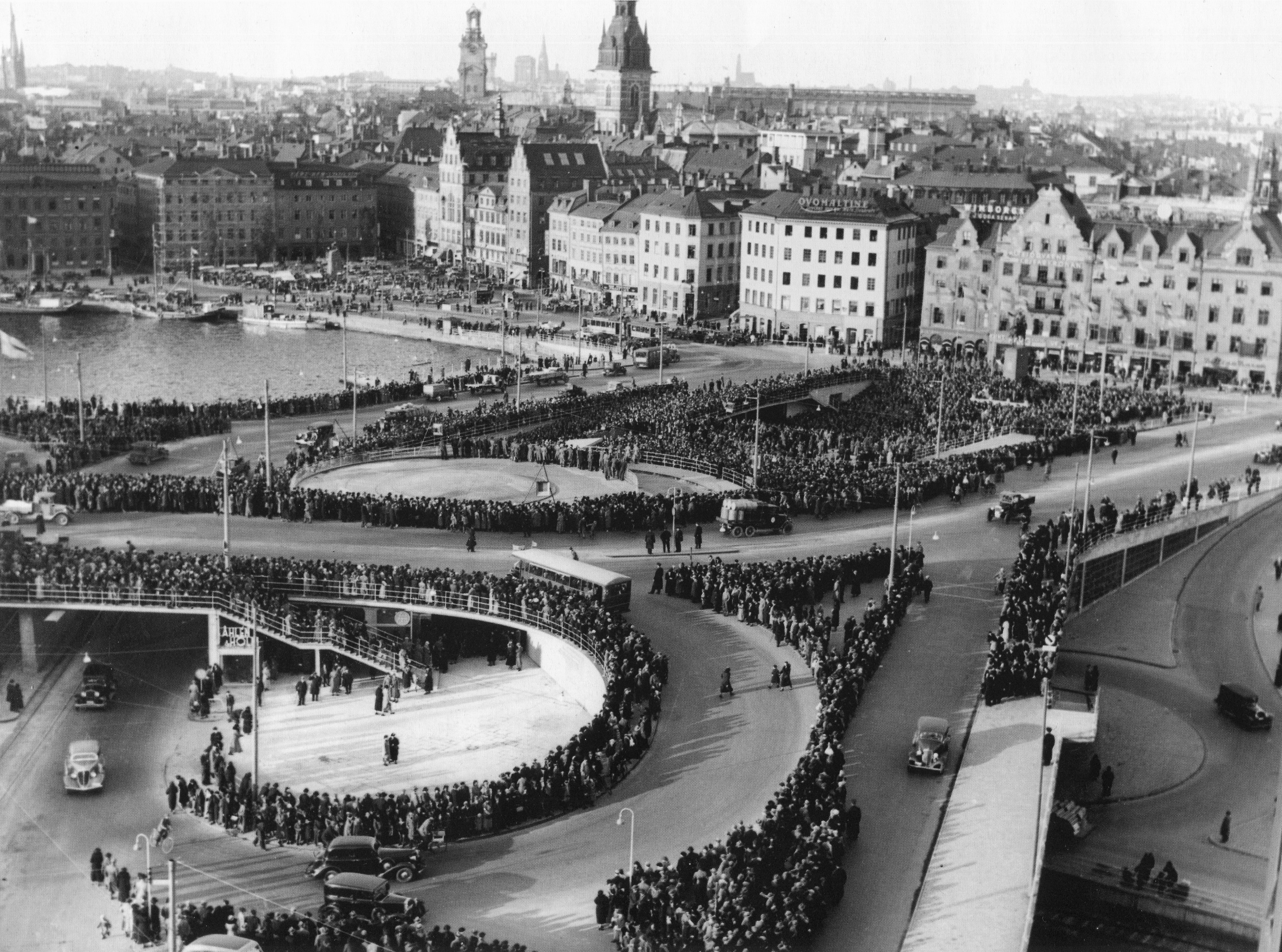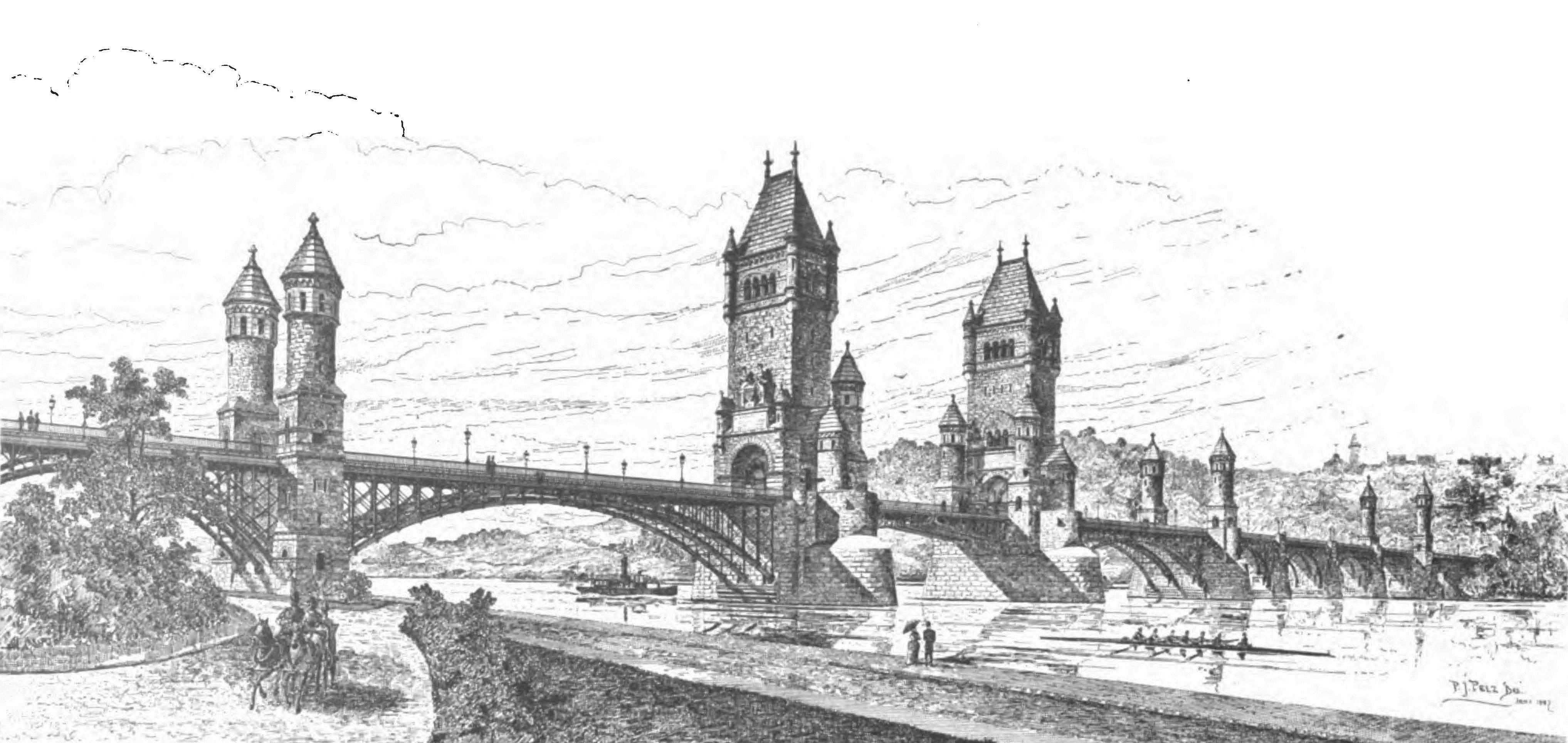|
Pentagon Road Network
The Pentagon road network is a system of highways, mostly freeways, built by the United States Federal government of the United States, federal government in the early 1940s to serve the Pentagon in northern Virginia. The roads, transferred to the Commonwealth of Virginia in 1964, are now largely state highways. The main part of the network is the Mixing Bowl at Interstate 395 (Virginia), Interstate 395 (Shirley Highway) and Route 27 (Virginia), Route 27 (Washington Boulevard (Arlington), Washington Boulevard), named because it had major weaving issues with traffic "mixing" between the two roads before it was rebuilt in the early 1970s. The "Mixing Bowl" nickname is now more commonly used to refer to the Springfield Interchange, where I-395, Interstate 495 (Capital Beltway), I-495, and Interstate 95, I-95 converge in nearby Springfield, Virginia, Springfield. The Mixing Bowl The Mixing Bowl originally opened in 1942 as the junction of the Shirley Highway with the connection to t ... [...More Info...] [...Related Items...] OR: [Wikipedia] [Google] [Baidu] |
The Pentagon
The Pentagon is the headquarters building of the United States Department of Defense, in Arlington County, Virginia, across the Potomac River from Washington, D.C. The building was constructed on an accelerated schedule during World War II. As a symbol of the United States Armed Forces, U.S. military, the phrase ''The Pentagon'' is often used as a metonym for the Department of Defense and its leadership. The building was designed by American architect George Bergstrom and built by contractor John McShain. Ground was broken on 11 September 1941, and the building was dedicated on 15 January 1943. General Brehon Somervell provided the major impetus to gain Congressional approval for the project. Colonel Leslie Groves was responsible for overseeing the project for the United States Army Corps of Engineers, U.S. Army Corps of Engineers, which supervised it. The Pentagon is List of largest office buildings, the world's second-largest office building, with about of floor space, of ... [...More Info...] [...Related Items...] OR: [Wikipedia] [Google] [Baidu] |
Springfield Interchange
The Springfield Interchange, also known as the Mixing Bowl, is the interchange of Interstate 95, Interstate 395, and Interstate 495 in Springfield, Virginia, outside of Washington, D.C. The interchange is located at exit 57 on the Capital Beltway, exit 170 on I-95, and exit 1 on I-395. Some people, including many Washington-area media sources, refer to this interchange as the "Mixing Bowl" because, prior to the reconstruction, local and long-distance travelers shared the same lanes and travelers had to merge to the right or left to reach the correct lanes for their destination. The last of this weaving and merging was eliminated on April 21, 2007. History The interchange was originally built completed in 1964 as a simple interchange between I-95 and the Capital Beltway. In 1966, only two years after completion, work to adjust the ramps onto the Shirley Highway began. It was completed in 1968. After community opposition prevented its construction through the city, a projec ... [...More Info...] [...Related Items...] OR: [Wikipedia] [Google] [Baidu] |
Median (highway)
A median strip, central reservation, roadway median, or traffic median is the reserved area that separates opposing lanes of traffic on divided roadways such as divided highways, dual carriageways, freeways, and motorways. The term also applies to divided roadways other than highways, including some major streets in urban or suburban areas. The reserved area may simply be paved, but commonly it is adapted to other functions; for example, it may accommodate decorative landscaping, trees, a median barrier, or railway, rapid transit, light rail, or streetcar lines. Regional terminology There is no international English standard for the term. Median, median strip, and median divider island are common in North American and Antipodean English. Variants in North American English include regional terms such as neutral ground in New Orleans usage or boulevard in Vancouver, British Columbia. In British English the central reservation or central median is the preferred usage; it ... [...More Info...] [...Related Items...] OR: [Wikipedia] [Google] [Baidu] |
High-occupancy Vehicle Lane
A high-occupancy vehicle lane (also known as an HOV lane, carpool lane, diamond lane, 2+ lane, and transit lane or T2 or T3 lanes) is a restricted traffic lane reserved for the exclusive use of vehicles with a driver and at least one passenger, including carpools, vanpools, and transit buses. These restrictions may be only imposed during peak travel times or may apply at all times. There are different types of lanes: temporary or permanent lanes with concrete barriers, two-directional or reversible lanes, and exclusive, concurrent, or contraflow lanes working in peak periods. The normal minimum occupancy level is two or three occupants. Many jurisdictions exempt other vehicles, including motorcycles, charter buses, emergency and law enforcement vehicles, low-emission and other green vehicles, and/or single-occupancy vehicles paying a toll. HOV lanes are normally introduced to increase average vehicle occupancy and persons traveling with the goal of reducing traffic congestion ... [...More Info...] [...Related Items...] OR: [Wikipedia] [Google] [Baidu] |
Reversible Lane
A reversible lane, also known as variable lane, dynamic lane, and tidal flow, is a managed lane in which traffic may travel in either direction, depending on certain conditions. Typically, it is meant to improve traffic flow during rush hours, by having overhead traffic lights and lighted street signs notifying driving, drivers which lanes are open or closed to driving or turning. Reversible lanes are also commonly found in tunnels and on bridges, and on the surrounding roadways – even where the lanes are not regularly reversed to handle normal changes in traffic flow. The presence of lane controls allows authorities to close or reverse lanes when unusual circumstances (such as construction or a traffic mishap) require use of fewer or more lanes to maintain orderly flow of traffic. Disambiguation There are similar setups with slightly different usages, although the terms may be commonly used interchangeably. Contraflow lane, Contraflow Lane: Typically used to refer to a bus la ... [...More Info...] [...Related Items...] OR: [Wikipedia] [Google] [Baidu] |
Cloverleaf (interchange)
A cloverleaf interchange is a two-level interchange (road), interchange in which all turns are handled by slip roads. To go left (in right-hand traffic; reverse directions in left-driving regions), vehicles first continue as one road passes over or under the other, then exit right onto a one-way three-quarter loop ramp (270°) and merge onto the intersecting road. The objective of a cloverleaf is to allow two highways to cross without the need for any traffic to be stopped by traffic lights. The limiting factor in the capacity of a cloverleaf interchange is traffic weaving. Overview Cloverleaf interchanges, viewed from overhead or on maps, resemble the leaf, leaves of a four-leaf clover or less often a 3-leaf clover. In the United States, cloverleaf interchanges existed long before the Interstate highway, Interstate system. They were originally created for busier interchanges that the original diamond interchange system could not handle. Their chief advantage was that ... [...More Info...] [...Related Items...] OR: [Wikipedia] [Google] [Baidu] |
Arlington Ridge Road
Arlington Ridge Road (originally known as Mount Vernon Avenue) is a street through residential areas and business districts in Arlington County, Virginia in the United States. South Arlington Ridge Road is roughly 1.5 miles in length and extends from Prospect Hill Park/Army-Navy Drive in the north to Glebe Road and Four Mile Run creek in the south. As it crosses the creek it turns into Mount Vernon Avenue. Arlington Ridge Road was first constructed in 1840, and formerly extended north through Arlington National Cemetery to Rosslyn, Virginia near Francis Scott Key Bridge and the Potomac River. Arlington Ridge Road was a single street from 1840 to 1966. After the closure of the central portion of the road, two sections were created: South Arlington Ridge Road, and North Arlington Ridge Road. The northern road began at Lee Boulevard (now known as Arlington Boulevard) and proceeded north along what is now Wilson Boulevard to 19th Street North. It incorporated a portion of what was ... [...More Info...] [...Related Items...] OR: [Wikipedia] [Google] [Baidu] |
Arlington Boulevard
Arlington Boulevard is a major arterial road in Arlington County, Virginia, Arlington County, Fairfax County, Virginia, Fairfax County, and the independent Fairfax, Virginia, City of Fairfax in Northern Virginia in metropolitan Washington, DC, United States. It is designated U.S. Route 50 in Virginia, U.S. Route 50 (US 50) for its entire length and is part of the National Highway System (United States), National Highway System. Arlington Boulevard serves to bisect Arlington County into its northern and southern sections in popular parlance and for designation of street directional affixes according to Arlington County, Virginia, street-naming system, the county's street-naming system. Route description Arlington Boulevard begins in the east on Columbia Island (District of Columbia), Columbia Island in Washington, D.C., at the traffic circle between the Arlington Memorial Bridge and Memorial Drive (Arlington National Cemetery), Memorial Drive. It carries northbound traf ... [...More Info...] [...Related Items...] OR: [Wikipedia] [Google] [Baidu] |
Lee Boulevard
Arlington Boulevard is a major arterial road in Arlington County, Fairfax County, and the independent City of Fairfax in Northern Virginia in metropolitan Washington, DC, United States. It is designated U.S. Route 50 (US 50) for its entire length and is part of the National Highway System. Arlington Boulevard serves to bisect Arlington County into its northern and southern sections in popular parlance and for designation of street directional affixes according to the county's street-naming system. Route description Arlington Boulevard begins in the east on Columbia Island in Washington, D.C., at the traffic circle between the Arlington Memorial Bridge and Memorial Drive. It carries northbound traffic across Boundary Channel into Virginia, where it has a partial interchange with Interstate 66 and the George Washington Memorial Parkway at the foot of the Theodore Roosevelt Bridge. At the interchange, Arlington Boulevard becomes a divided highway and assumes the U.S ... [...More Info...] [...Related Items...] OR: [Wikipedia] [Google] [Baidu] |
Arlington Memorial Bridge
The Arlington Memorial Bridge, often shortened to Memorial Bridge, is a Neoclassical masonry, steel, and stone arch bridge with a central bascule (or drawbridge) that crosses the Potomac River in Washington, D.C., the capital of the United States. First proposed in 1886, the bridge went unbuilt for decades thanks to political quarrels over whether the bridge should be a memorial, and to whom or what. Traffic problems associated with the dedication of the Tomb of the Unknown Soldier in November 1921 and the desire to build a bridge in time for the bicentennial of the birth of George Washington led to its construction in 1932. Designed by the architectural firm McKim, Mead, and White, decorated with monumental statues depicting valor and sacrifice by sculptor Leo Friedlander, and cast by Ferdinando Marinelli Artistic Foundry of Florence, Italy, Arlington Memorial Bridge defines the western end of the National Mall. The bridge's draw span was permanently closed in 1961 and replac ... [...More Info...] [...Related Items...] OR: [Wikipedia] [Google] [Baidu] |






